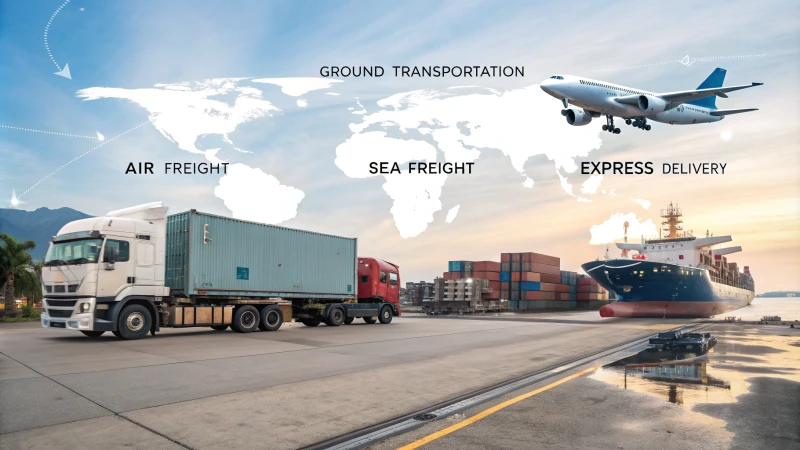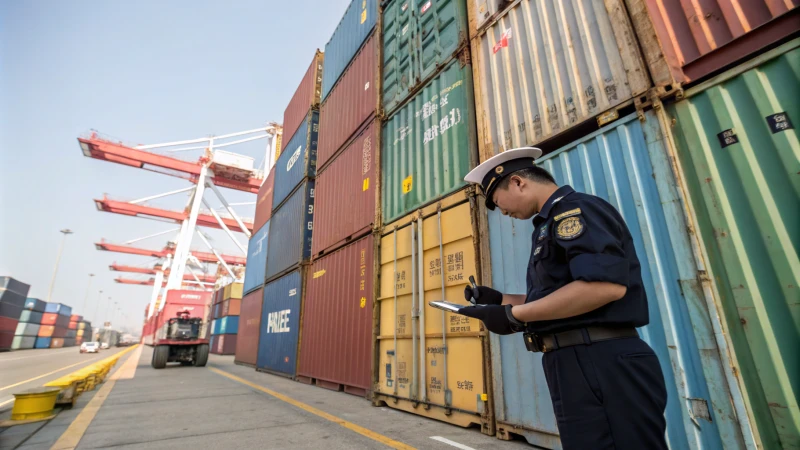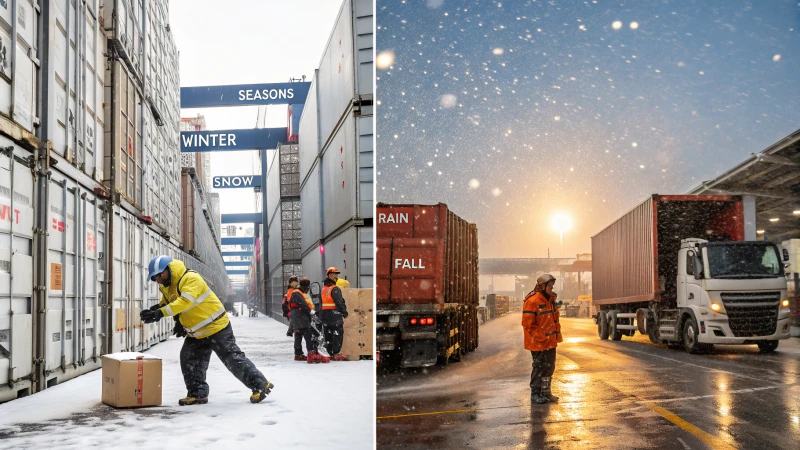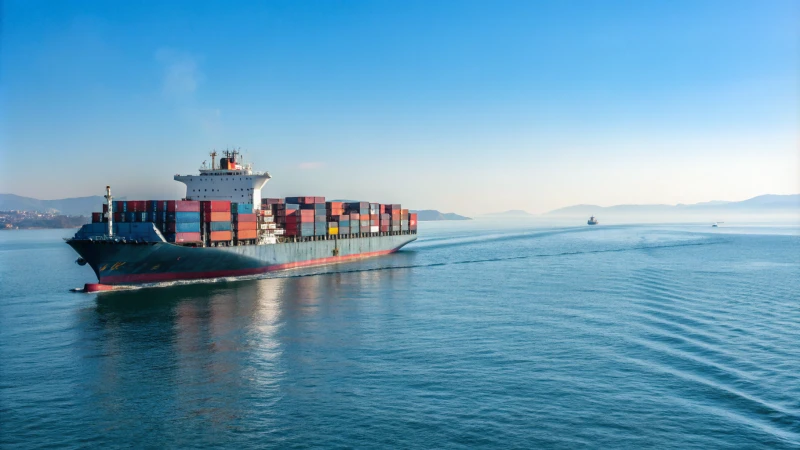Have you ever waited excitedly for a package traveling from far away, like China to Canada? I really know that feeling! Let's explore the factors that affect shipping times between these countries. We will also learn how to deal with this complex process.
Shipping from China to Canada takes different amounts of time. Air freight often takes 3-7 days. Sea freight usually lasts 20-40 days. Shipping type, distance, customs clearance and seasonal demands all affect how long shipments take. All these factors influence the delivery time.
When I first began importing goods, the wait felt really hard to handle. Shipping time from China to Canada changes a lot. Air freight usually takes about 3-7 days. Sea freight requires more patience, with times ranging from 20-40 days. But what affects these shipping times? Let's look at different shipping methods, distances, customs processes and peak seasons that really disrupt plans.
Air freight from China to Canada takes 3-7 days.True
Air freight is the fastest shipping method, typically taking between 3 to 7 days for delivery from China to Canada.
Sea freight is always faster than air freight.False
This claim is false; sea freight can take significantly longer, usually 20-40 days, depending on various factors.
What are the Different Shipping Methods Available?
Shipping methods might seem confusing. Sending products on time is very important. Exploring these choices together helps find the best match for my shipping needs.
**Various transportation options include ground, air, sea, express and freight forwarding. Each option brings different costs, speeds and uses. Knowing these details really helps me decide wisely for my business and meet what customers expect.
Ground Transportation
Ground transport is my typical choice for many deliveries. Trucks and vans carry packages nearby. This method feels quite reliable.
Advantages꞉
- Economical for short trips.
- Dependable for certain nearby destinations.
- Frequent services are very helpful in tight situations.
Disadvantages꞉
- Slower than air, especially in busy times.
- Traffic and weather cause delays, which can really be annoying.
Find more info at ground shipping options.
Air Transportation
Speed is crucial with air transport. It's thrilling when packages travel swiftly to places!
Advantages꞉
- Fast delivery (often same-day or next-day).
- Covers long distances with many airlines, excellent for my international clients.
Disadvantages꞉
- Costlier than ground or sea, which sometimes makes me think twice.
- Weight limits on some carriers can be tricky with heavy items.
Check air freight details for more information.
Sea Transport
Sea freight is my reliable partner for large shipments. Waiting longer is worth it for bulk goods.
Advantages꞉
- Cost-effective for large shipments, great for my wholesale needs.
- Handles heavy and large items well, which reassures me.
Disadvantages꞉
- Takes longer (several weeks), testing my patience at times.
- Weather and port delays are real worries.
Discover more at sea freight logistics.
Express Delivery
Express delivery is my go-to when urgency demands. It’s comforting to have quick options!
Advantages꞉
- Really fast delivery, sometimes within hours - ideal for last-minute needs!
- Tracking and insurance options bring extra peace of mind.
Disadvantages꞉
- High costs impact my budget more than regular delivery.
- Not always available in certain areas, which can be a hassle for me.
Find express shipping rates here.
Freight Forwarding
Freight forwarders are priceless to me. They simplify the complex logistics process between me and carriers.
Advantages꞉
- Knowledge of customs and rules reduces my stress greatly.
- Better negotiation with carriers improves my financial outcomes.
Disadvantages꞉
- Extra fees for their services mean I must watch expenses.
- Trusting the forwarder’s efficiency is always on my mind.
Learn more at freight forwarding insights.**

Shipping Overview
Shipping involves more than moving packages between locations. It connects with customers and fulfills promises. I send single items or handle bulk shipments. Understanding various methods is vital for my business. Each shipping option has influenced my logistics journey.
Ground Shipping
Ground shipping is one of the most common methods used for both personal and business shipments. It typically involves trucks and vans to transport packages across cities or regions.
Advantages:
- Cost-effective for short distances
- Reliable for deliveries within a certain radius
- Frequent service options
Disadvantages:
- Slower than air shipping
- May be affected by traffic and weather conditions
For more information, check out ground shipping options1.
Air Shipping
Air shipping offers the fastest delivery options, making it a preferred choice for time-sensitive shipments.
Advantages:
- Quick transit times (often same-day or next-day delivery)
- Global reach with numerous airlines available
Disadvantages:
- Higher costs compared to ground and sea shipping
- Weight limits on certain carriers
For a breakdown of air shipping services, visit air freight details2.
Sea Freight
Sea freight is ideal for large shipments and is often used for international shipping. This method is cost-efficient for bulk goods but takes longer to deliver.
Advantages:
- Economical for large volumes
- Suitable for heavy and oversized items
Disadvantages:
- Longer transit times (can take weeks)
- Potential for delays due to weather or port congestion
Explore more about sea freight at sea freight logistics3.
Express Shipping
Express shipping is a premium service offered by many carriers, ensuring quick delivery of packages. This method can be utilized for urgent shipments.
Advantages:
- Guaranteed fast delivery, sometimes within hours
- Tracking and insurance options available
Disadvantages:
- Significantly higher costs than standard shipping methods
- Limited availability in certain regions
Learn about express shipping rates here4.
Freight Forwarding Services
Freight forwarding services act as intermediaries between shippers and carriers. They handle logistics and documentation, making international shipping easier.
Advantages:
- Expertise in customs clearance and regulations
-
Ability to negotiate better rates with carriers
Disadvantages:
- Additional fees may apply for services rendered
-
Dependence on the forwarder's reliability
For more on freight forwarding solutions, check out freight forwarding insights5.
Ground shipping is the fastest shipping method available.False
This claim is false as ground shipping is generally slower than air and express options.
Air shipping offers global reach with numerous airlines available.True
This claim is true as air shipping allows for international deliveries via various airlines.
How Do Customs Procedures Affect Shipping Time?
Do you ever think about why your package takes so long to come? Customs checks really slow down shipping. They are a hidden problem. Understanding them helps get packages on time.
Customs procedures slow down shipping time by introducing possible delays during clearance. Documentation accuracy is very important. Many factors like inspections and seasonal volume changes greatly affect delivery schedules. Staying organized is very helpful. Being informed is probably crucial. These steps help your shipments arrive on time.

The Role of Customs Procedures
Customs procedures are the gatekeepers of international shipping. They greatly affect how fast goods reach their destination. Navigating them feels like a maze. When I began my journey in import/export trade, I often felt frustrated. Delays from customs surprised me. I vividly remember waiting anxiously for a shipment. My goods were stuck because of a missing document. Understanding these procedures is crucial for anyone who wants timely deliveries.
Common Customs Documents
The following table outlines key documents typically required for customs clearance:
| Document Type | Purpose |
|---|---|
| Bill of Lading | Proof of contract between shipper and carrier |
| Commercial Invoice | Details of the goods being shipped |
| Packing List | Lists contents and weights of packages |
| Certificate of Origin | Verifies where the goods were produced |
| Import License | Required for specific types of goods |
Having these documents ready can speed up the clearance process significantly. I keep a checklist before shipping to avoid last-minute problems. For more document details, check out our guide on customs documentation6.
Customs Inspections
Customs inspections feel like a game of luck. Will your shipment get picked or pass through? Some goods have a higher chance of inspection based on risk factors like:
- Type of goods: Certain items get more attention.
- Origin country: Some countries face higher inspection levels.
- Previous compliance issues: Past violations mean more inspections.
An inspection on my shipment delayed it by days or weeks. Knowing the risk of inspection helps in better planning.
Impact of Trade Agreements
Trade agreements also influence customs procedures and shipping times. A favorable agreement can be your best friend, reducing tariffs and easing processes. For example, under the USMCA, some goods clear faster. It’s worth exploring how trade agreements affect shipping strategies. Check our article on trade agreements7 for more details.
Seasonal Fluctuations and Customs
Seasonal fluctuations also matter. During peak times like holidays, customs handle more shipments, leading to longer processing times. I learned to plan shipments well ahead during these busy periods. Using tools to track peak shipping seasons8 saved me from unnecessary delays.
Conclusion on Shipping Strategies
As we conclude, remember understanding customs procedures impacts shipping time and helps in logistics management. Being proactive with documentation and aware of inspection risks avoids many pitfalls. It’s all about having a very smooth and stress-free logistics journey!
Customs procedures can cause significant shipping delays.True
Delays in customs clearance due to documentation issues or inspections can greatly impact shipping times.
Trade agreements always expedite customs clearance.False
While trade agreements can streamline processes, they do not guarantee faster clearance for all shipments.
What Seasonal Factors Impact Delivery Times?
Have you ever thought about how the changing seasons affect your delivery times? Seasons really change how goods travel. Let's look at the factors that influence logistics. Understanding these factors might help transform your business operations.
Seasonal factors like shipping methods, distance, customs procedures and weather events significantly affect delivery times. Businesses anticipate these variables. They improve logistics efficiency. Customer satisfaction really increases.

1. Shipping Methods
Selecting the right shipping method proves crucial, notably during busy seasons. Urgent shipments often go by air freight. Air freight costs more but is faster. It's like choosing the quickest way to a family gathering on holidays. Arriving on time without spending too much on gas is vital! During busy periods, I monitor carrier reliability and transit times closely. Delays are the worst, especially when clients expect their products.
2. Distance and Shipping Routes
Distance affects delivery more than I first realized. Importing goods from Asia to North America takes days over the vast ocean. Initially, I faced delays due to underestimating route congestion. Now, I use route optimization tools to help avoid busy ports during peak seasons, like outsmarting a traffic jam on a holiday trip.
3. Customs and Import Procedures
Customs challenges appear especially during busy seasons. I vividly recall holiday rush delays due to unforeseen customs inspections. It's important to anticipate these hurdles; close communication with customs brokers is essential to navigate regulatory checkpoints swiftly.
4. Seasonal and Peak Periods
The holiday season is both exciting and stressful for business owners. Analyzing past trends helps in forecasting demand; one year, I wasn't ready for a surge in orders - it was chaotic! Now, I adjust my logistics strategies beforehand by exploring peak season strategies9 that keep me sane during high demand.
5. Transit Time Variations by Carrier
Carriers vary in their transit times; they have different strengths and weaknesses. Early on, wrong carrier choices led to critical delays. I now evaluate carrier performance seasonally because choosing partners who meet my needs during busy times is crucial.
6. Weather and Geopolitical Events
Weather can disrupt the best-laid plans; a snowstorm once delayed a shipment unexpectedly! Geopolitical events also impact shipping schedules significantly; contingency plans for unpredictable disruptions have saved me several times - they are like having an umbrella on a cloudy day.
7. Container and Freight Availability
Container availability changes the game during peak seasons when demand skyrockets - it's like finding a parking spot at a crowded mall during holiday sales! To avoid high freight rates and long wait times, I track global supply chain trends and adjust my strategies early.
Air freight is always faster than sea freight.False
While air freight is generally faster, it may not always be the case due to factors like routing and congestion.
Customs inspections increase during peak seasons.True
Heightened security and shipment volume during busy periods lead to more rigorous customs inspections, causing potential delays.
How Can I Optimize Shipping Times for My Business?
As a business owner, I understand the importance of keeping customers satisfied with timely deliveries. Many strategies have greatly improved my logistics operations and reduced costs. These strategies have truly helped me along the way.
To speed up shipping times for your business, explore different shipping methods. Analyze delivery routes. Understand customs procedures very well. Plan for busy seasons. Study how carriers perform. Use technology to simplify operations. These strategies significantly improve logistics efficiency. Operations probably become smoother.

Explore Different Shipping Methods
To get faster shipping times for my business, I study different shipping options. Options such as express shipping, standard shipping, and freight services can be tailored to meet specific needs. For instance, while express shipping costs more, it may be necessary for urgent deliveries. You can compare shipping methods10 to see what aligns best with your business goals.
Analyze Distance and Shipping Routes
I also look at routes to find the best ones. The distance between your supplier and customers plays a critical role in shipping times. Employing route optimization software can help you identify the fastest routes, considering current traffic conditions and potential delays. For businesses shipping internationally, understanding trade routes is essential. Use tools to optimize shipping routes11 for better efficiency.
Navigate Customs and Import Procedures
I handle customs quickly. Customs clearance can often lead to delays in shipping. Familiarizing yourself with customs regulations in both exporting and importing countries is crucial. Partnering with a knowledgeable customs broker can streamline this process, ensuring that documentation is in order. You might want to learn about customs processes12 to avoid unnecessary setbacks.
Plan for Seasonal and Peak Periods
I get ready for busy times. During peak seasons, such as holidays or special sales events, shipping volumes increase dramatically. Planning ahead by adjusting inventory levels and choosing logistics partners that can handle peak demand can minimize delays. Creating a timeline for peak periods can aid in preparation. Check out strategies for managing peak shipping times.
Understand Transit Time Variations by Carrier
I learn about the differences between shipping companies. Different carriers have different transit times, even for the same shipment. It’s essential to analyze carrier performance by reviewing past shipment data. This analysis can guide you in selecting the best carrier for your shipping needs. You can find insights into carrier performance metrics.
Identify Factors Influencing Shipping Time
| Several external factors can affect shipping times, such as: | Factor |
|---|---|
| Weather | Severe weather can lead to delays in transport operations. |
| Geopolitical Events | Political instability may affect border crossings and routes. |
| Container Availability | A shortage of containers can slow down shipments, especially during high demand. |
By understanding these factors, you can better plan for potential delays and adjust your logistics strategy accordingly. Consider reading about external factors affecting shipping for deeper insights.
Use Technology to Streamline Operations
I use technology smartly. Investing in technology such as shipment tracking systems, inventory management software, and automated alerts can significantly enhance your logistics operations. Automation reduces human error and ensures that you’re always updated on shipment statuses. Learn about the latest technologies in shipping optimization that can improve your processes.
Express shipping guarantees faster delivery than standard shipping.True
Express shipping typically offers quicker transit times compared to standard shipping, making it ideal for urgent deliveries.
Weather has no impact on shipping times during peak seasons.False
Severe weather can cause significant delays in transport operations, affecting shipping times even during busy periods.
Conclusion
Explore the estimated shipping times from China to Canada, influenced by shipping methods, customs procedures, and seasonal factors affecting delivery efficiency.
-
Discover the best shipping methods for your needs and optimize your logistics strategy. ↩
-
Learn more about the speed and efficiency of air shipping methods available. ↩
-
Understand the best practices for using sea freight in international shipping. ↩
-
Find out how express shipping can enhance your delivery options. ↩
-
Get insights into using freight forwarding services to streamline your shipments. ↩
-
Explore how customs procedures influence shipping efficiency and learn practical tips for faster clearance. ↩
-
Understand the impact of trade agreements on shipping times and how they can benefit your logistics planning. ↩
-
Find out about peak shipping seasons and strategies to avoid delays during high-volume periods. ↩
-
This link provides valuable strategies for businesses to navigate peak shipping seasons effectively. ↩
-
Discover practical strategies to enhance your logistics operations and reduce delivery times effectively. ↩
-
Learn about advanced tools that can streamline your shipping processes and improve efficiency. ↩
-
Find insights on how to navigate customs procedures effectively to avoid delays. ↩




